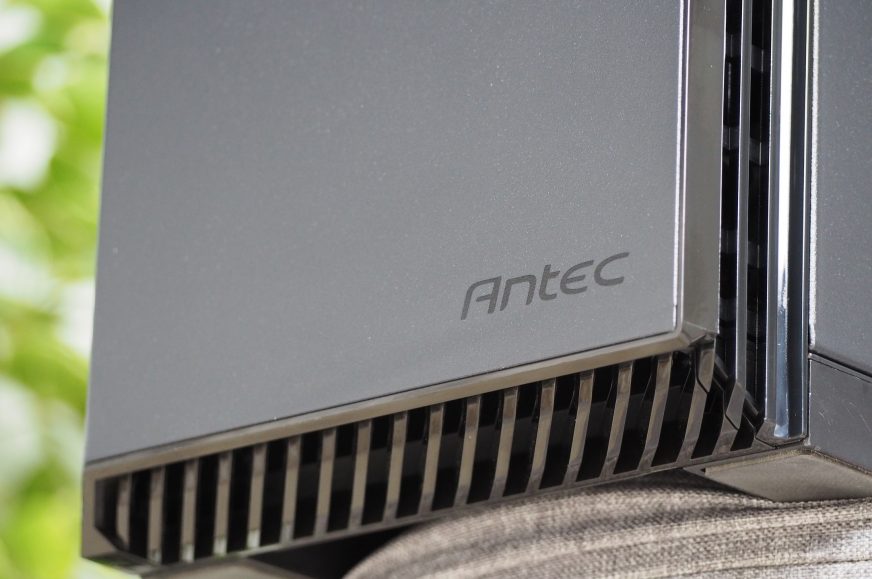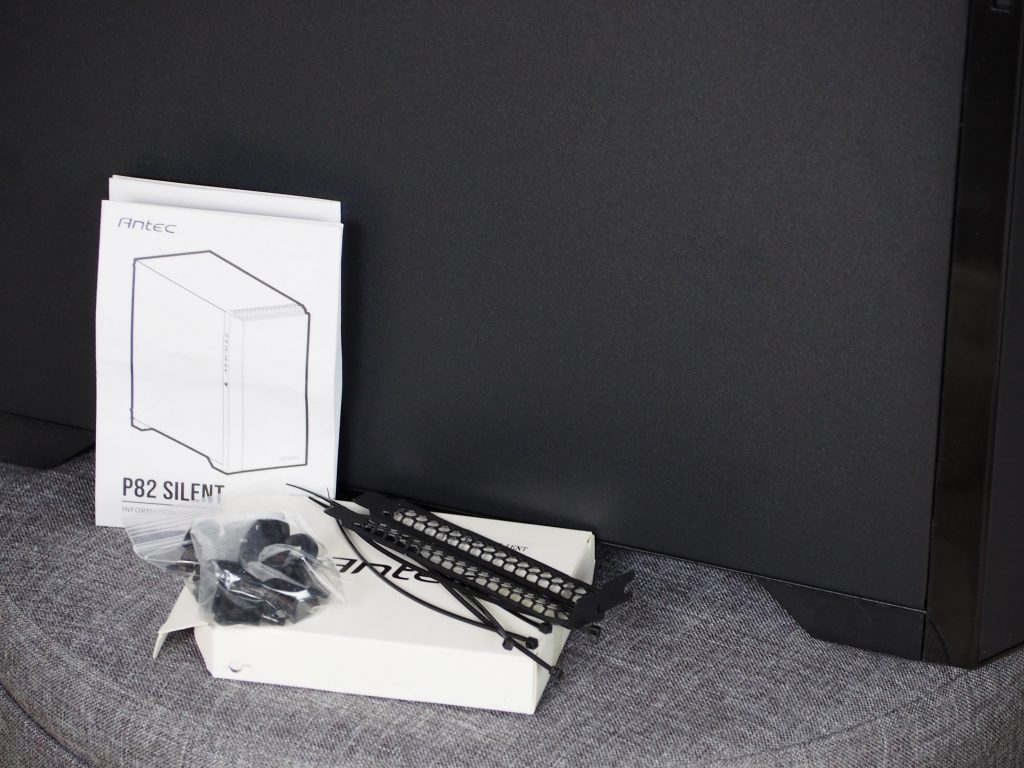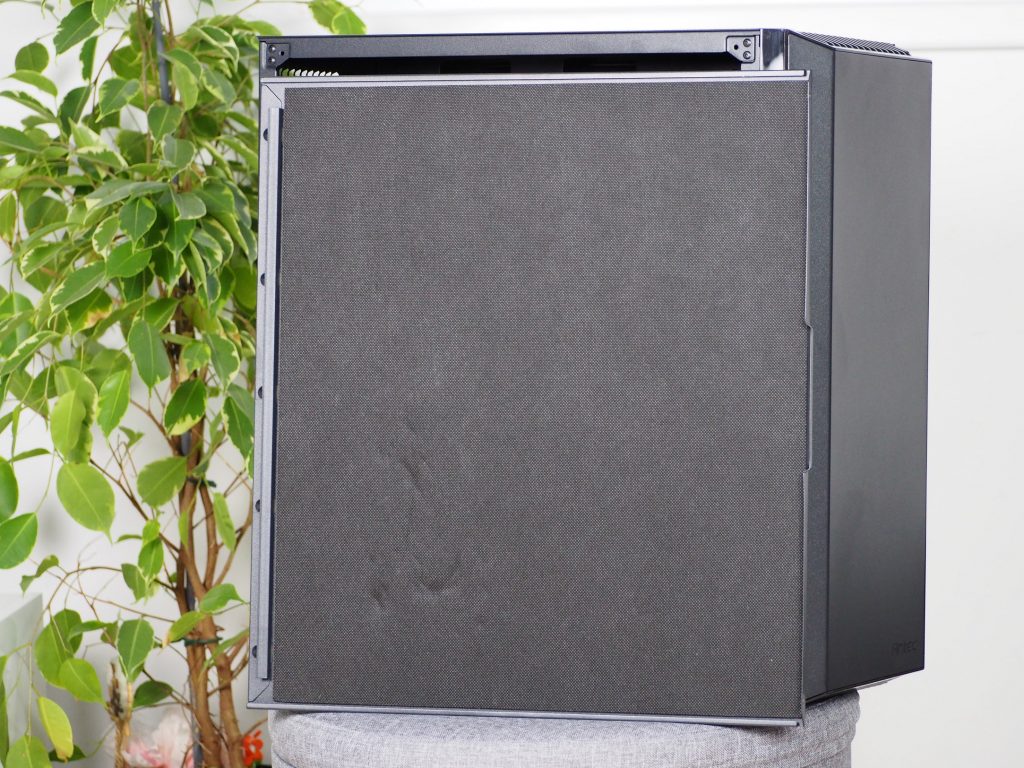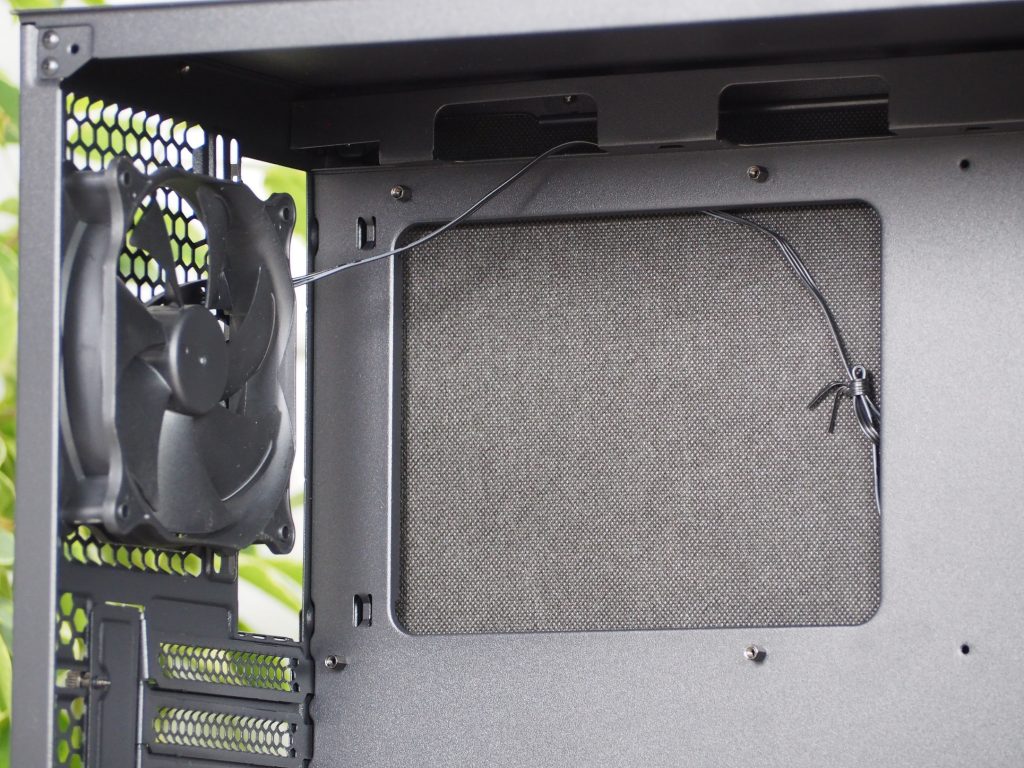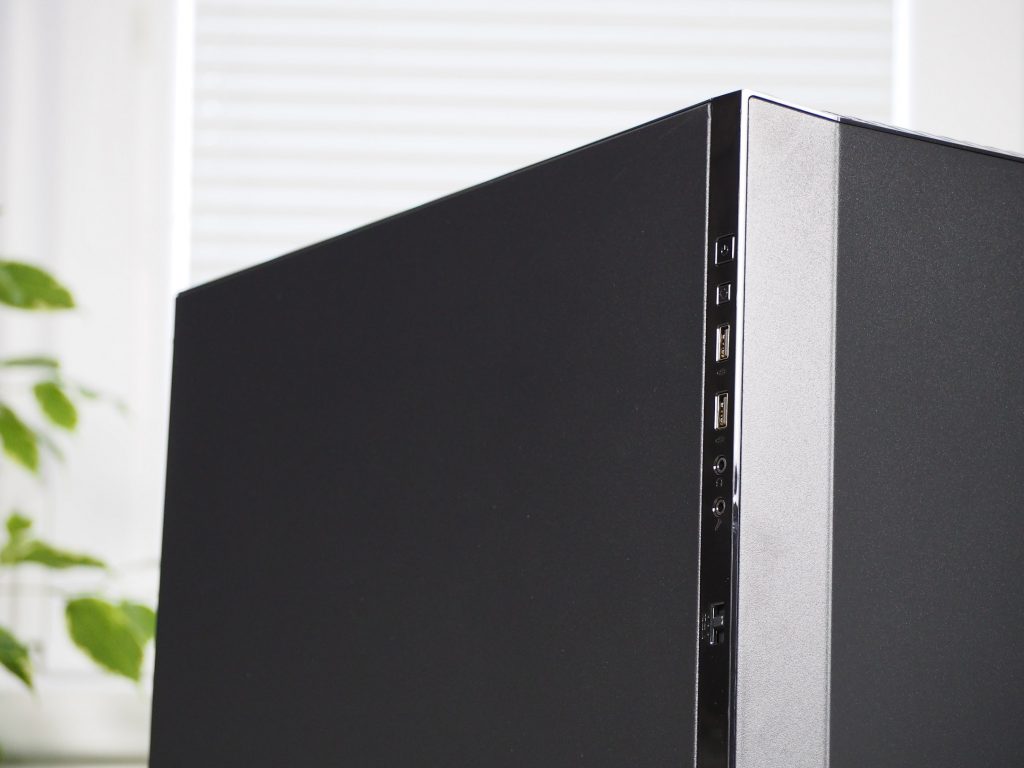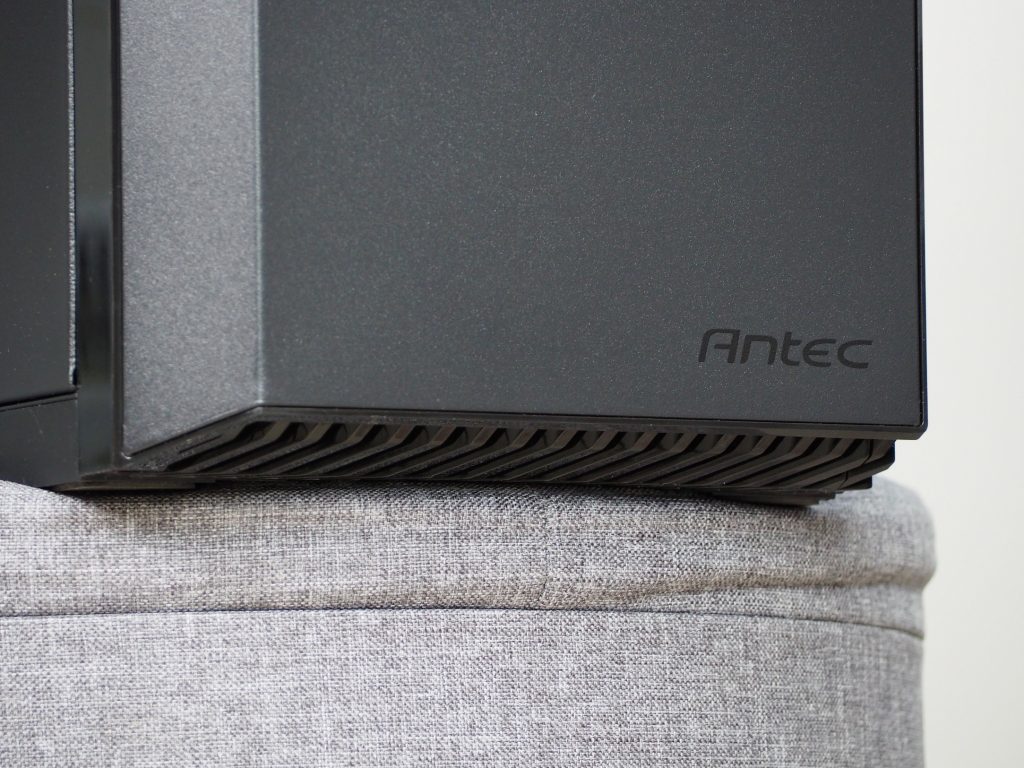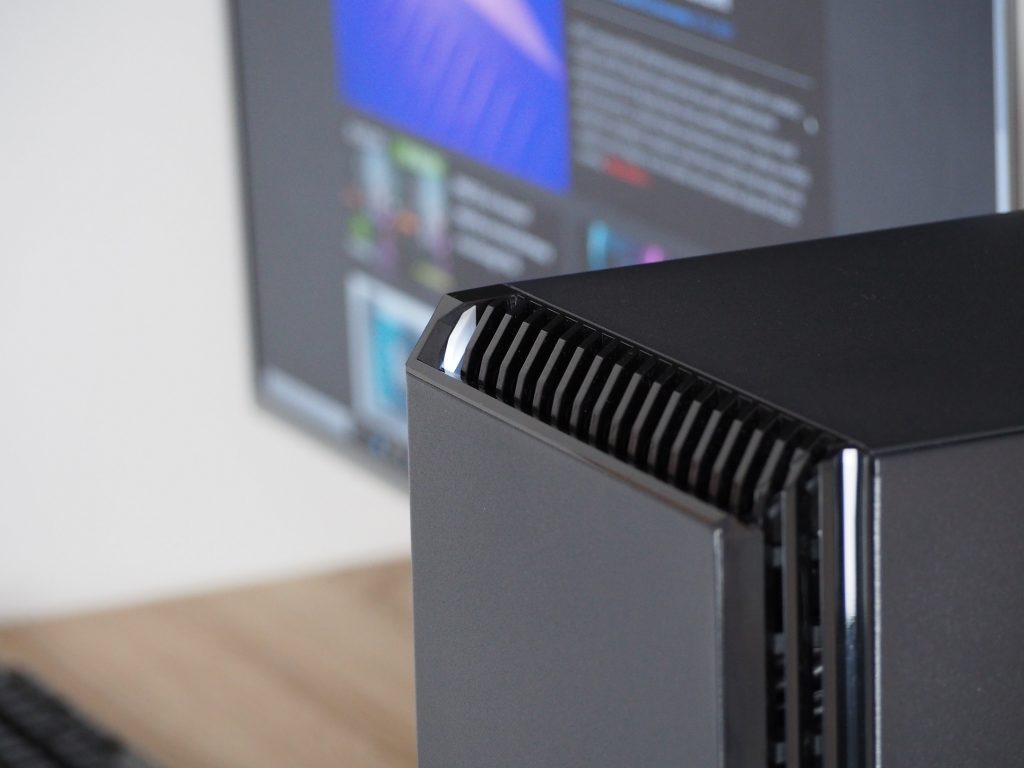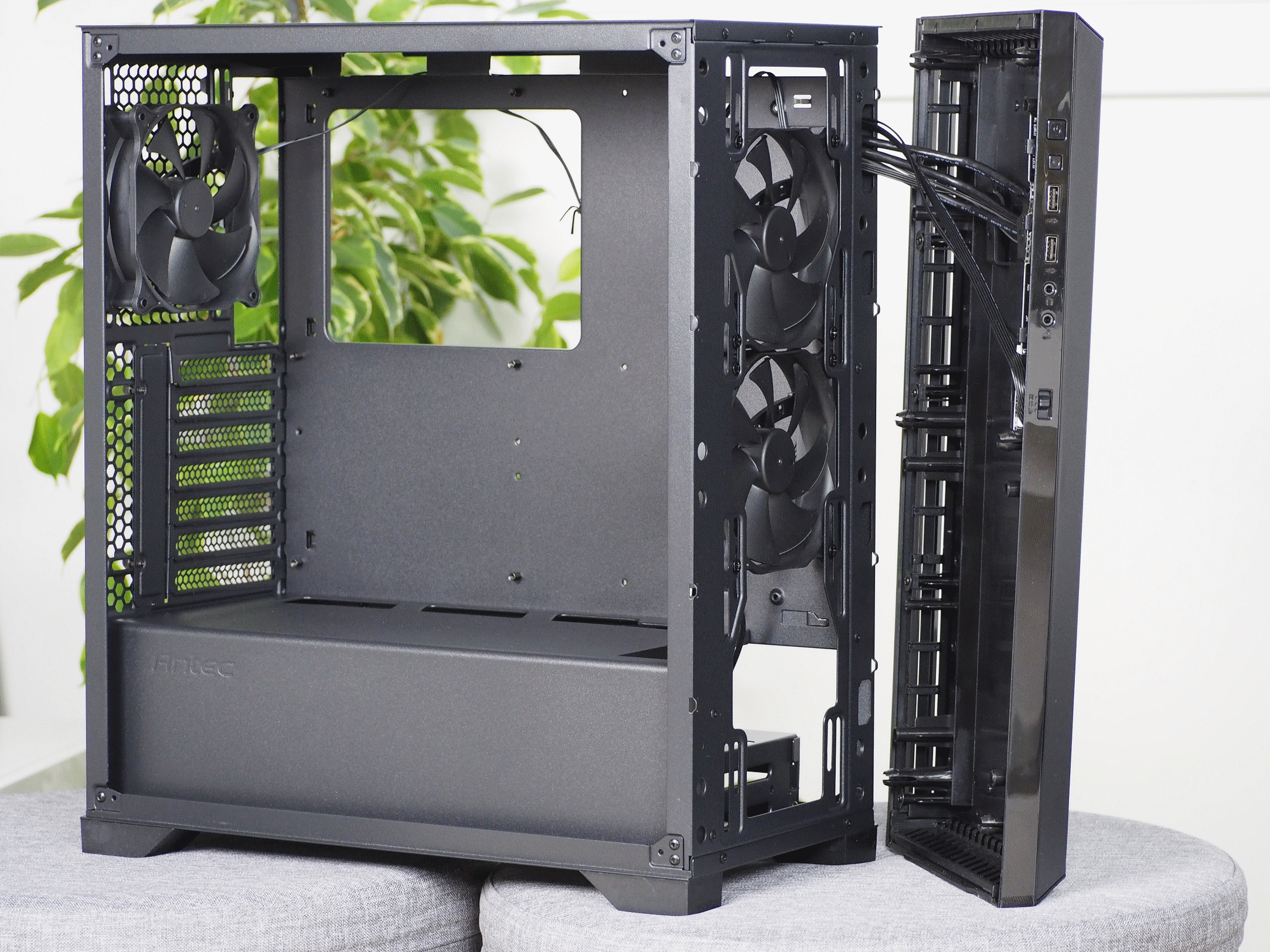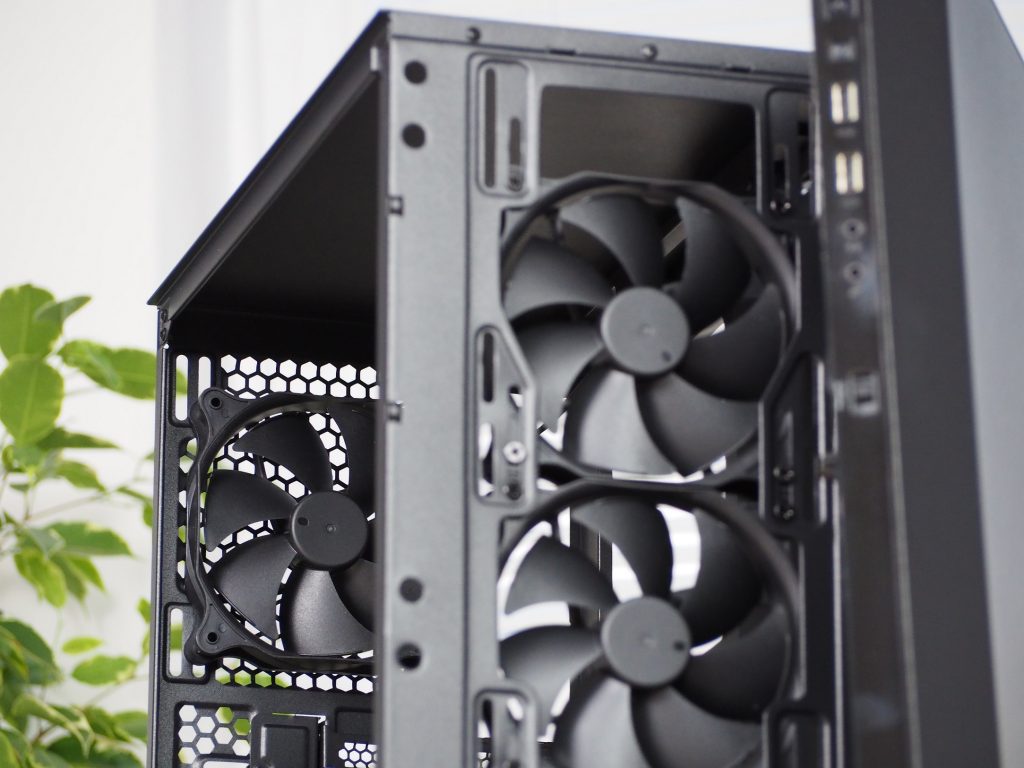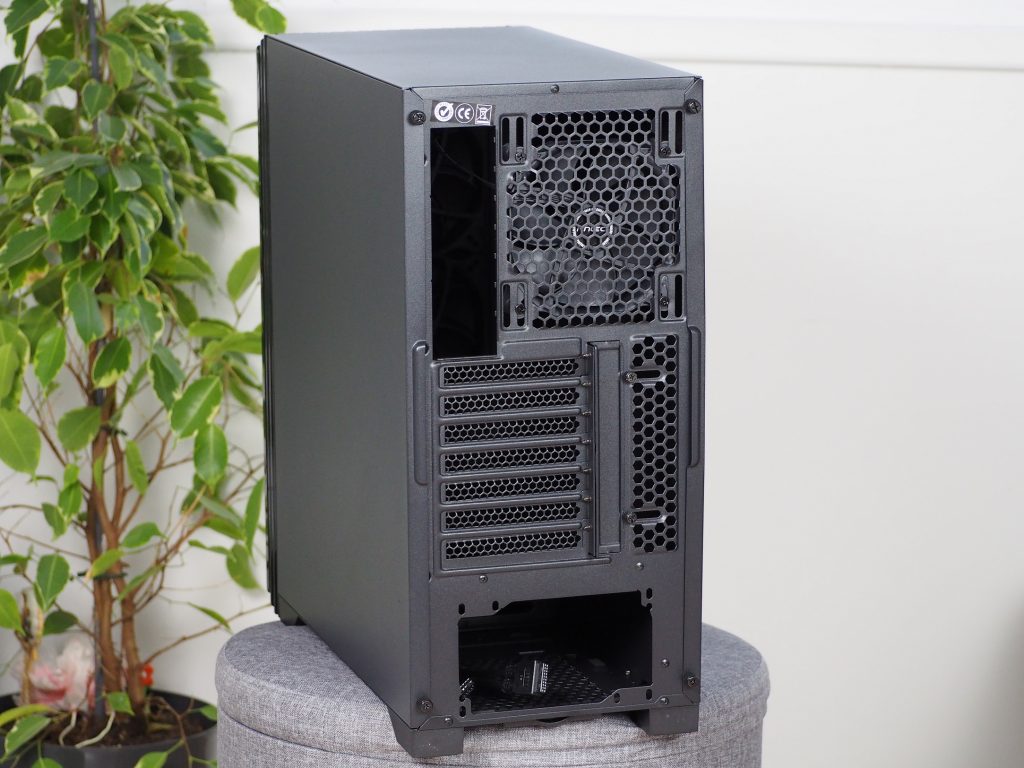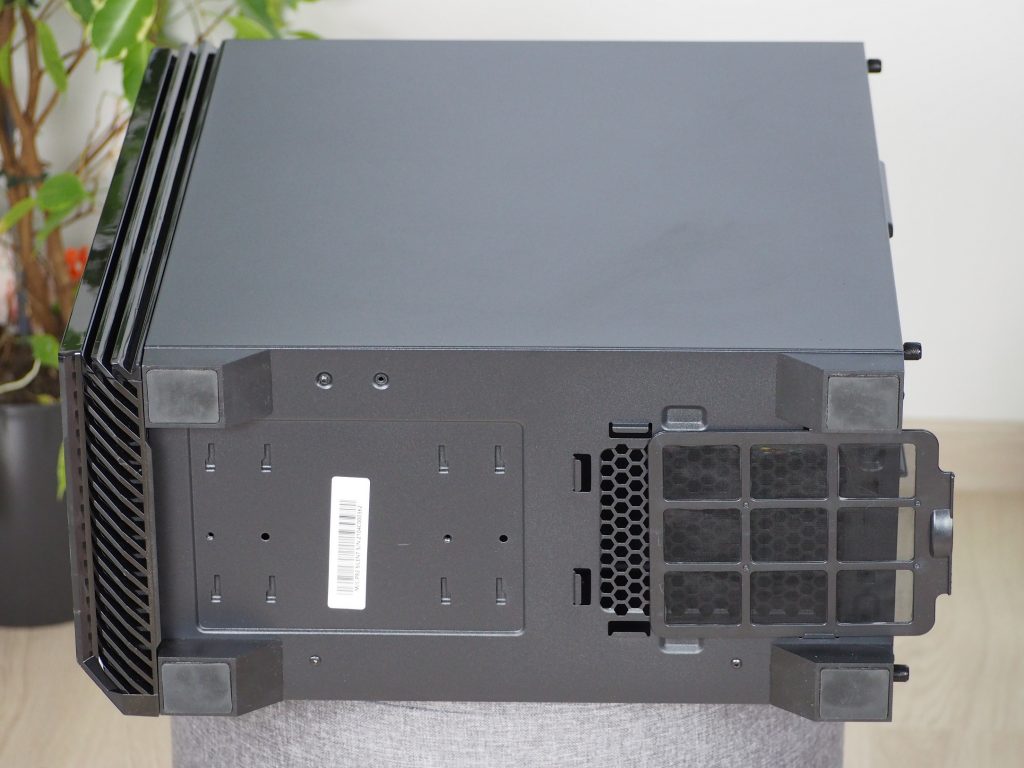Elegancy on the desk
Antec recently expanded its mini series of P82 PC cases with a model Silent. This should be a quieter alternative to the P82 Flow with priority in the best possible cooling, which will probably be worse with the Silent, but the reward could come in the form of low noise. You can see how this solution worked in the following test. We will show you the bright sides but also the cons of the P82 Silent. And not just in terms of cooling.
Main specs
| Parameters | Antec |
| P82 Silent | |
| Supported motherboard formats | Mini-ITX, mATX, ATX |
| Supported PSU format | ATX |
| CPU cooler | up to 178 mm |
| Graphics cards | up to 380 mm |
| Fan | 4× 120 mm |
| Supported liquid radiators | 1× up to 360 mm + 1× up to 140 mm |
| 2,5" positions | 2 + 2 shared |
| 3,5" positions | 2 shared |
| 5,25" positions | none |
| Dimensions [H/D/W] (and volume) | 480 × 454 × 215 mm (47 l) |
| Weight | 7 kg |
| Materials | steel + plastic |
| Connectivity | 2× USB 3.2 gen. 1 + 2× 3,5mm jack |
| Approximate price | € 80 |
Elegancy on the desk
The contents of the package are as common as most cases on the market. A few cable ties, all the necessary screws with anti-vibration rubber for mechanical disks and brief instructions.
The whole case looks simple to me, but also decent. Today’s trend is tempered glass, but you would be unsuccessfully looking for it here. The entire exterior is made of SPCC sheet metal and a piece of plastic. Both sides panels are lined with a soft insert, which serves to lower the noise inside the case. The thickness of the sheets is 0.5 mm, which is significantly reflected in their flexibility. You are at around halfway to proper stability. But at a price of 80 euros, it is acceptable. The attachment of the side panels uses the old known system of two screws, nothing special.
The I/O panel of the case is located on the left side of the exterior, its frame is made of glossy plastic. Since I have my computer on the table, I approve of this approach, everything is at my hand. The power and reset buttons are pressed very comfortably. Neither hard or deep, nor easy and shallow. Other components include slower USB x2 and 2× 3.5 mm jack for headphones with a microphone.
A little bit below the classic elements of the panel, there is a switch to adjust the fan speed. This is the main difference compared to the first model Flow. You have a choice of three modes. The first sets the speed to low for less demanding work, where the noise in my test was at 35.8 dBA. In the second mode (middle position), the fans are completely switched off. The last one is high performance mode, in which I measured the noise level of the case at the level of 38.9 dBA.
The rib-like perforation of the front panel for cold air intake is relatively large. It goes across the entire width of the front panel at the bottom and top, and it also extends to the right along the entire height of the case. The front of the case is quite neat. The left side remains obscured for better I/O panel prominence. The Antec logo does not spoil the sleek impression of the case. The cherry on the cake is a status LED, which is in the shape of the last rib on the top of the case. The light intensity is relatively low and won’t annoy your eyes even at night.
One of the disadvantages of the front panel is the cables. They hold on to the case, so be careful when removing the mask. However, the dust filter is located on the main framework. It is held only by magnets, so it is not necessary to manipulate the front panel to remove it. It is a pity that Antec did not use a finer mesh for suction, this way the majority of dust penetrates inside.
Two 120 mm fans with unknown specifications for intake are located behind the mesh. If necessary, you can replace them with up to 3× 140 mm or a water cooling radiator up to 360 mm. The identical fan is pre-installed on the exhaust.
The back panel does not differ, it contains a classic hole for the I/O panel of the motherboard, a hole for a 120 or 140 mm fan (120 mm one is pre-installed, as we have already mentioned). The case has seven PCI Express slots for expansion cards. The blanking plates intended for them are removable, so they are not supposed to be broken open. The plate next to the card plates is perforated, which is also one of the few perforations on this box. The position for the power supply is traditionally at the bottom. It is standard, the power supply is screwed directly to the cabinet frame (no frames, adapters, or anything like that). Supported PSU format is ATX.
The entire exterior ends with four rubber feet at the lower part of the case and a removable fine dust filter under the position of the power supply. I’ll add that the rubber part does not leave any smudges on the floor.
- Contents
- Elegancy on the desk
- Decent interior with little flaws
- Test methodology
- CPU and GPU cooling tests
- Motherboard cooling tests
- SSD cooling and temperature under the top wall tests
- Conclusion





